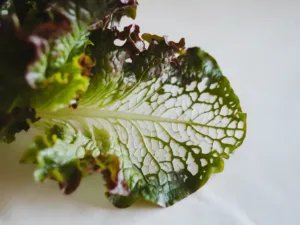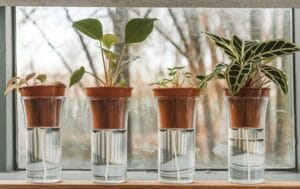Marigolds are not only beautiful flowering plants that brighten up any hydroponic system with their vibrant colors, but they also offer a range of beneficial properties. They are particularly suitable for hobby gardeners looking for a simple, low-maintenance plant that is both aesthetic and functional.
One of their main functions in a hydroponic system is attracting pollinators like bees and butterflies. This can add a touch of nature to your balcony or indoor garden while contributing to biodiversity. As companion plants, they are unbeatable: they help to attract beneficial insects and keep harmful ones at bay. Marigolds not only add color to your system but also support the thriving of other plants.
The Best Marigold Varieties for Your Hydroponic System
There are numerous marigold varieties that are perfect for hydroponics. Depending on what you want to achieve—whether attracting bees or simply harvesting beautiful blooms for decoration—you can choose from various varieties.
Some of the best varieties for hydroponic systems are:
| Variety | Flower Color | Height | Bloom Duration | Special Features |
|---|---|---|---|---|
Calendula officinalis | Orange, Yellow | 30-60 cm | June to October | Classic marigold, great for pollinators |
Fiesta Gitana | Multicolored | 25-30 cm | Spring to Fall | Compact variety, ideal for small systems |
Pacific Beauty | Orange, Yellow | 60 cm | Summer | Large flowers, particularly robust |
Art Shades | Cream, Pink | 45-60 cm | Summer | Pastel tones, very decorative |
Prince | Yellow | 50 cm | Summer to Fall | Striking, vibrant blooms |
The choice of variety greatly depends on your preferences and the conditions of your system. Do you want a particularly compact plant for a smaller system? Then “Fiesta Gitana” would be ideal. Or are you looking for a large, sturdy variety that blooms all summer long? In this case, “Pacific Beauty” is the right choice.
The Ideal Hydroponic System for Marigolds
Marigolds are adaptable plants that thrive well in various hydroponic systems. Systems like the Nutrient Film Technique (NFT) or Deep Water Culture (DWC) are particularly suitable, as they support root growth and provide the plants with sufficient nutrients. In an NFT system, a thin nutrient solution continuously flows past the roots, optimally supplying the plant and promoting flowering.
For marigolds with deep roots, DWC is an excellent choice. In this system, the roots sit in a nutrient-rich water bath that continuously supplies the plant. For smaller, compact varieties like “Fiesta Gitana,” a Flood and Drain System is also a good option, as it regularly provides water and nutrients while allowing oxygen to reach the roots.
Growing Marigolds: How to Get Started
Growing marigolds in a hydroponic system is relatively straightforward. The first step is to sow the seeds. Seedling cubes made of rock wool or coconut fibers are best, as they provide a stable foundation for the roots and retain moisture well.
Start by placing the seeds in the moist seedling cubes. Ensure they are kept in a warm location to promote germination—ideally at a temperature of about 20–22°C. After about 7–14 days, the first seedlings should sprout. In this phase, it is important to keep the cubes slightly moist but avoid waterlogging, as the delicate roots can otherwise rot.
Once the plants are about 5 cm tall and have developed some strong leaves, you can transfer them to the hydroponic system. Make sure the roots are well embedded in the substrate and ensure they get enough light. In the first few weeks after transplanting, you should keep the nutrient level low, as young plants can be sensitive to high concentrations.
The Right Substrate for Marigolds
The substrate you use in your hydroponic system plays a crucial role in the growth of marigolds. Since these plants develop a relatively deep root system, it is important to choose a substrate that provides both stability and sufficient oxygen for the roots.
Rock wool is particularly suitable for marigolds. It is lightweight, retains moisture well, and provides a stable environment for the roots. Coconut fibers are also an excellent option, as they support the roots and regulate moisture. Mix these materials if necessary to utilize the best properties of both substrates.
Another substrate to consider is expanded clay. It provides good aeration and prevents the roots from “drowning” if the hydroponic system stores too much water. However, you must ensure that the plants regularly receive enough water and nutrients, as expanded clay does not retain much moisture.
Optimal Temperature for Marigold Growth
Marigolds prefer moderate temperatures for optimal growth and blooming. The ideal temperature range for marigolds is 18–24°C. Within this range, the plants feel most comfortable and develop blooms quickly.
Temperatures above 30°C can inhibit growth and slow down flower formation. Too low temperatures, especially below 10°C, can cause the plants to stop growing properly and become more susceptible to diseases. Therefore, it is important to maintain a constant temperature in a controlled environment like a greenhouse or indoors.
The Right Light for Your Marigolds
Marigolds love light! For optimal blooming, it is crucial they receive enough light—at least 12 to 14 hours per day. In a hydroponic system, especially indoors, it is important to rely on artificial lighting to replace natural sunlight.
LED grow lights are the best choice for marigolds in a hydroponic system. They are energy-efficient and provide the full light spectrum that plants need for healthy growth. LEDs generate little heat, which is particularly advantageous in smaller, enclosed systems, as they do not excessively increase the temperature.
You should ensure the lamps are placed about 30 to 40 cm above the plants so they receive enough light without burning the leaves. Additionally, it is important not to shorten the lighting time too much during the flowering phase, as marigolds need a constant light source to develop strong blooms.
pH and EC Values for Healthy Growth
As with all plants in hydroponics, pH and EC values (electrical conductivity) play an important role in the healthy growth of marigolds. The pH value of the nutrient solution should be between 6.0 and 7.0, which is slightly basic. This range allows the plants to optimally absorb the nutrients.
The EC values, which indicate the concentration of nutrients in the solution, should be around 1.0 to 1.8 mS/cm. Too high EC values can cause the plants to “burn” due to an overconcentration of nutrients, while too low values can result in slow growth and weak blooms.
To monitor these values, you should regularly use pH and EC meters. This ensures that your marigolds have the best possible conditions to grow vigorously and bloom abundantly.
The Right Nutrients for Strong Blooms
Marigolds in hydroponics need a balanced mix of macro and micronutrients to reach their full potential. The most important nutrients to pay attention to are:
- Nitrogen (N): Promotes leaf growth and overall plant development.
- Phosphorus (P): Is crucial for flower formation and ensures strong, colorful blooms.
- Potassium (K): Strengthens cell structure and helps the plant resist diseases and maintain blooms longer.
Additionally, micronutrients like magnesium, iron, and zinc are important to avoid deficiencies. Especially during the flowering phase, phosphorus and potassium should be prioritized, as they directly influence flower development.
You can use commercial hydroponic fertilizers specifically designed for flowering plants. Be sure to follow the dosage instructions carefully to avoid over-fertilization, which could harm the plants.
Harvesting Marigolds: When and How?
Harvesting marigolds is a moment of joy, as their vibrant blooms can be used both for decoration and in bouquets. The best time to harvest the flowers is early in the morning, when the plant is still well-hydrated and the blooms are particularly fresh.
To harvest the flowers, use a clean, sharp pair of scissors or a knife. Cut the stems about 5–10 cm below the bloom. Be sure to only harvest fully developed flowers that have fully opened to achieve the best results. You can use the blooms immediately or store them in a vase, where they will last for several days.
An additional tip: Regularly harvesting the flowers promotes further growth, as the plant focuses its energy on new blooms instead of maintaining old, withered ones. This way, you’ll have fresh blooms on hand over an extended period.
Diseases and Pests in Hydroponic Marigolds
Marigolds are naturally quite resilient plants, but they are not entirely immune to diseases and pests. The most common problems with marigolds in hydroponic systems are powdery mildew, aphids, and root rot.
- Powdery Mildew: This fungal disease manifests as a white coating on the leaves. It often occurs with high humidity and poor ventilation. Ensure your plants have enough space between them and good air circulation.
- Aphids: These small insects can multiply quickly and weaken the leaves and blooms of your marigolds. A simple method of control is to regularly rinse the plants with a stream of water or introduce natural predators like ladybugs.
- Root Rot: This often occurs when the plant’s roots are submerged in water for too long or the substrate is too moist. Ensure your hydroponic system is properly set up and the plants receive enough oxygen at the roots.
Prevention is key here! Regularly inspect your plants and keep the conditions in your system as optimal as possible to minimize these issues.
Special Tips for Caring for Marigolds
If you want to get the best out of your marigolds, there are some insider tips that can help you achieve particularly magnificent blooms. For one, marigolds benefit enormously from regular pruning. Trim off spent flower heads to encourage the plant to produce new blooms. This is known as deadheading and leads to a longer and more abundant blooming phase.
Another tip: Ensure your marigolds receive their nutrients regularly, especially during the blooming period. Regularly checking the pH and EC values helps to avoid nutrient deficiencies and keeps the plants healthy.
Additionally, if necessary, you can use plant supports to stabilize the larger varieties of marigolds. Especially the taller growing types can become somewhat unstable over time and benefit from being gently tied to supports to keep them upright.
Why Marigolds are the Perfect Choice for Your Hydroponic System
Marigolds are an excellent choice for any hydroponic system, whether you are a beginner or an experienced gardener. Their vibrant colors and ability to attract beneficial insects like bees and butterflies make them a valuable addition to any system. Moreover, they are relatively low-maintenance and suitable for various hydroponic systems, from NFT to DWC.
Their regular blooming, easy care, and potential as a decorative element or in bouquets are additional reasons why marigolds should not be missing from any setup. With the right lighting conditions, nutrients, and a bit of attention, you will be rewarded with lush blooms that add a touch of nature and color to your garden.
Whether you choose the plants primarily for their appearance, resilience, or function as pollinator magnets, marigolds will make your hydroponic system bloom—in the truest sense of the word!







